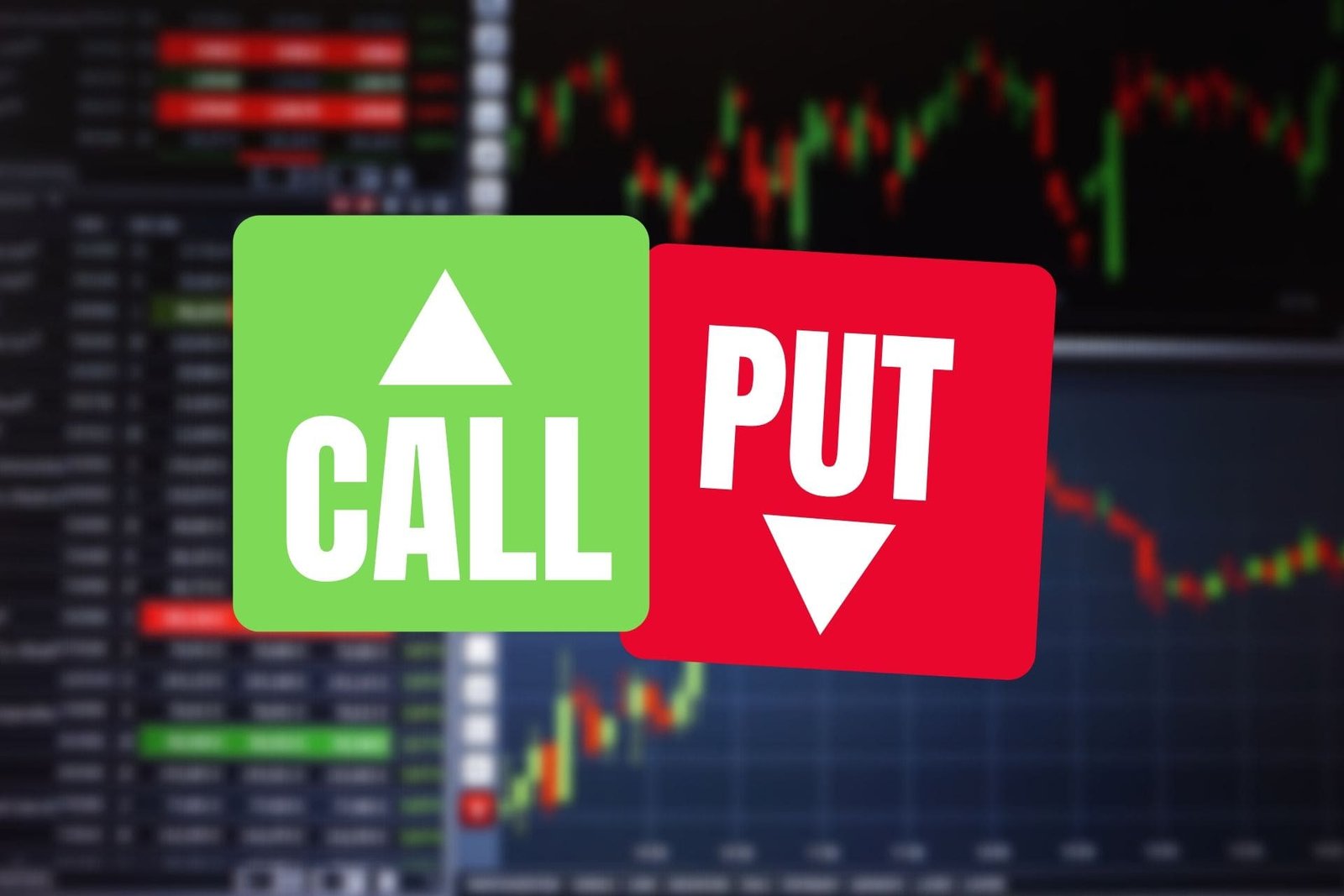What is a Unrestricted Stock
- by:
- Nick H
Key Points
Unrestricted stock can be freely traded or transferred on public markets without limitation
Most shares purchased through standard brokerage accounts are unrestricted, allowing investors maximum liquidity
Unrestricted stock plays a crucial role in supporting efficient capital markets, attracting institutional investors
10 Stocks You Should Buy Before August >
affiliate add
For adsense add
Mail Sign Up
Get The Latest News & Stock Picks
Stay ahead of the market with expert news, actionable tips, and exclusive stock picks delivered straight to your inbox. Join a community of investors who value real insights and smarter strategies. Sign up now and get the edge you need to invest with confidence.
By submitting your email, you agree to receive updates and promotional content from our team. You can unsubscribe at any time. For more details, please review our Privacy Policy.
For adsense add
For adsense add
For anyone navigating the stock market, the concept of “unrestricted stock” can seem deceptively simple. Yet, it plays a vital role in how shares change hands, how wealth is built, and how companies manage their ownership structure. Unrestricted stock is often discussed in contrast to restricted stock, but what does it really mean for an investor or a company insider to hold unrestricted shares? Understanding this topic is key for anyone interested in equity ownership, whether you are a new investor, a company founder, or someone exploring advanced trading strategies.

This guide unpacks everything you need to know about unrestricted stock. We will cover what unrestricted stock means, how it compares to restricted stock, how shares become unrestricted, legal and regulatory backgrounds, who typically owns unrestricted stock, and the practical advantages and potential risks associated with holding these freely tradable securities.
What is Unrestricted Stock?
Unrestricted stock refers to shares of a company that are freely tradable on the open market. There are no transfer restrictions, lockup periods, or legal limitations attached to these shares. Anyone who holds unrestricted stock can sell or transfer it at any time, subject only to standard market rules and typical brokerage settlement times.
The freedom that comes with unrestricted stock is in stark contrast to restricted stock, which cannot be sold or transferred until certain conditions are met. These conditions are often regulatory or contractual, put in place to protect the market or the company itself.
The key advantage of unrestricted stock is liquidity. Owners can participate in free trading, which means they can buy or sell their shares when they choose, capturing opportunities as they arise. For many investors, this liquidity is the most attractive quality of owning publicly traded shares.
The Legal and Regulatory Context
To fully understand unrestricted stock, it helps to have some background on the rules that govern stock issuance and trading in the United States.
Public companies issue stock that trades on regulated exchanges like the New York Stock Exchange or Nasdaq. These shares, after meeting regulatory requirements and clearing any contractual limitations, become unrestricted. The primary regulatory body overseeing the issuance and trading of stocks is the U.S. Securities and Exchange Commission (SEC).
When companies go public or issue new shares, certain securities laws apply. One of the most important is the Securities Act of 1933, which requires that all offers and sales of securities be registered with the SEC, unless an exemption applies. Shares sold in registered offerings, once in the hands of the public, are typically unrestricted. This means the average investor purchasing stock on a public exchange is buying unrestricted stock, eligible for free trading at any time.
On the other hand, shares that are acquired through private placements, employee compensation, or other non-public methods may be subject to restrictions. These shares are restricted until certain legal requirements are met, which could involve a holding period or SEC approval.
The moment those requirements are satisfied, the stock transitions from restricted to unrestricted, joining the pool of shares that are fully tradable on the open market
Unrestricted Stock vs Restricted Stock: Key Differences
The distinction between unrestricted and restricted stock can have significant implications for investors, employees, and companies. Here are the main differences:
1. Transferability:
Unrestricted stock can be sold, transferred, or gifted without requiring company or regulatory approval (beyond routine compliance checks). Restricted stock cannot be sold until certain conditions are met.
2. Holding Periods:
Restricted shares often come with mandatory holding periods. For example, Rule 144 under the Securities Act establishes time-based restrictions for how long a security must be held before it can be sold. Unrestricted shares do not face such holding periods.
3. Registration:
Unrestricted stock has typically been registered with the SEC, making it legal to trade on public exchanges. Restricted stock usually results from private offerings, grants to employees, or compensation agreements, and is not initially registered for public sale.
4. Ownership Audience:
Most everyday investors hold unrestricted stock. Founders, early employees, or large investors in a company might hold restricted stock, especially before a company goes public or before a lockup expires.
5. Legends and Certificates:
Restricted shares often carry a restrictive legend printed on the certificate or noted electronically. This legend indicates the shares cannot be sold without meeting certain requirements. Unrestricted shares lack such notations.
Understanding these differences is crucial, particularly for employees at startups or companies preparing for an IPO, as well as for investors looking to understand liquidity and resale rights.
Most Like Articles
How Stock Becomes Unrestricted
There are several paths by which stock becomes unrestricted. Here are the most common scenarios:
1. Registered Public Offerings:
When a company completes an initial public offering (IPO) or a registered secondary offering, the shares sold to the public are unrestricted. They can be freely traded once they are issued and settled.
2. Expiration of Holding Periods:
If someone receives restricted stock, for example through a private placement, the shares can become unrestricted after a specific holding period, usually six months or one year. This is governed by Rule 144, which details when and how these shares can be resold.
3. Registration by the Issuer:
A company may choose to file a registration statement with the SEC to make restricted shares unrestricted. This sometimes happens after a merger, acquisition, or as part of employee compensation plans.
4. Satisfaction of Contractual Conditions:
Shares may also be subject to company-imposed restrictions, such as employee vesting schedules or lockup agreements after an IPO. Once those contractual terms expire or conditions are met, the shares become unrestricted.
After a stock transitions to unrestricted status, it can be transferred or sold in the open market without special permission, beyond the usual compliance checks against insider trading or market manipulation.
Who Holds Unrestricted Stock?
Unrestricted stock is most commonly held by:
Retail investors who purchase shares on a public stock exchange
Institutional investors, such as mutual funds, pension funds, and hedge funds, holding large quantities of publicly traded shares
Employees and insiders, after restricted shares convert to unrestricted status (following a vesting period or expiration of a lockup)
Company founders and early investors, after restrictions imposed at or before the IPO are lifted
For the average investor, all stock purchased through a standard brokerage account on a public exchange is unrestricted, unless otherwise stated.
The Advantages of Unrestricted Stock
The benefits of holding unrestricted stock are significant and help explain why these shares are so desirable.
Liquidity and Free Trading
Liquidity is the biggest advantage. With unrestricted stock, owners can sell, transfer, or leverage their shares at any time. There is no need to seek special approval, wait for regulatory milestones, or negotiate with the issuing company. This ease of transaction is what underpins the efficiency and attractiveness of public markets.
Portfolio Flexibility
Unrestricted stock allows investors to respond quickly to market events, manage risk, rebalance portfolios, and capitalize on new opportunities. The freedom to trade at will means investors can protect gains, cut losses, or seize emerging trends without delay.
Access to Capital
For individuals or companies holding large quantities of unrestricted shares, these holdings can be used as collateral for loans or can be quickly converted into cash if needed. This makes unrestricted stock a valuable asset not just for investment purposes but also for liquidity management and financing.
No Lockup Headaches
There is no concern about lockup periods or holding requirements. Insiders at a company often face restrictions after an IPO, but once those periods expire and shares become unrestricted, they enjoy the same freedom as public shareholders.

Potential Risks and Considerations
While unrestricted stock offers freedom and liquidity, there are also important risks and considerations to keep in mind.
Market Volatility
The ease of trading can sometimes lead to increased volatility. Because anyone can buy or sell unrestricted shares at any time, prices can swing sharply, particularly for stocks with low trading volumes or companies experiencing news events.
Short Selling and Speculation
Unrestricted stocks are targets for short sellers and speculative traders. This dynamic can add risk, as share prices may be influenced by market sentiment, technical trading, or short-term speculation rather than company fundamentals.
Insider Selling
When a large number of restricted shares become unrestricted, insiders may sell significant quantities of stock, potentially leading to downward pressure on the share price. Investors should be aware of upcoming expirations of lockup periods or vesting schedules that could result in an increased supply of shares on the market.
Compliance and Reporting
Although unrestricted stock can be freely traded, insiders or large shareholders may still face reporting requirements under securities laws. For example, officers, directors, and significant shareholders must file disclosures with the SEC if they sell large amounts of stock. These requirements help prevent market manipulation and ensure transparency, but they do not restrict the basic ability to trade.
Where to invest $1,000 right now
When our analyst team has a stock tip, it can pay to listen. After all, Tendie Shacks total average return is 1,053% — a market-crushing outperformance compared to 180% for the S&P 500.
They just revealed what they believe are the 10 best stocks for investors to buy right now, available when you join Our Tendie Community.
*Tendie Shack returns as of today
How to Identify If a Stock Is Unrestricted
Most shares bought and sold on public exchanges are unrestricted. However, investors should check for the following:
Any “restricted” legend or notation in their brokerage account or on physical stock certificates
Purchase history, especially if the shares were acquired through a private placement, employee stock plan, or as a gift
Brokerage account documentation, which will usually indicate if any shares are subject to restrictions
If you are unsure, your brokerage or the company’s investor relations department can provide confirmation. Transparency in ownership status is important, especially before planning a major transaction.
Case Study: Unrestricted Stock in an IPO
To understand how restricted shares transition to unrestricted, consider the typical IPO process. When a company goes public, it issues new shares to the public that are unrestricted from the start. However, pre-IPO shareholders such as founders, employees, and early investors often have restricted shares subject to a lockup period. This lockup usually lasts 90 to 180 days after the IPO.
Once the lockup expires, those shares become unrestricted. Insiders can then participate in free trading, although they may still have to comply with disclosure requirements if they are significant shareholders. The expiration of lockup periods can sometimes cause price volatility if many shares hit the market at once.
Common Misconceptions
There are several myths surrounding unrestricted stock that are worth clarifying:
Myth 1: All public shares are always unrestricted.
Fact: While the majority of shares trading on public exchanges are unrestricted, some may remain restricted for legal or contractual reasons.
Myth 2: Only company insiders deal with restricted or unrestricted stock.
Fact: Anyone can encounter restricted stock, especially if participating in private placements or employee stock plans.
Myth 3: Unrestricted stock is always better than restricted stock.
Fact: While liquidity is a major advantage, some investors value restricted stock for its potential upside, especially if it comes with favorable purchase terms or aligns with long-term company growth.
Unrestricted Stock Free Trading: The Bottom Line
Unrestricted stock is the backbone of free trading in the equity markets. It allows investors and companies to participate in open, transparent, and efficient capital markets. The freedom to buy, sell, or transfer shares at will not only benefits individual investors but also supports the broader market’s health and dynamism.
If you are investing in the stock market, chances are you are dealing primarily with unrestricted stock. Recognizing the privileges that come with this status, as well as the risks, will make you a more informed, confident participant in today’s complex investment landscape.
Whether you are buying your first share or managing a sophisticated portfolio, understanding the unique qualities of unrestricted stock is a foundational step on the path to financial success.
Right now, we’re issuing “Double Down” alerts for three incredible companies, and there may not be another chance like this anytime soon.
Tendie Shack Returns as of Today
For adsense add












